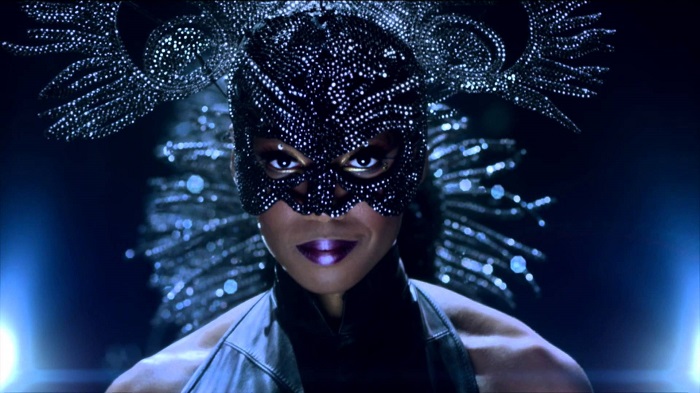Returning again to the Royal Albert Hall, Cirque du Soleil’s Amaluna is loosely based on Shakespeare’s The Tempest. Queen Prospera elebrates her daughter Miranda’s coming of age by raising a storm, causing a group of sailors to wash up on the island of Amaluna. One of the sailors, Romeo, saw Miranda and they fell in love at first sight. However, their love is tested by the goddesses and creatures that inhabit the island.
At 2.5 hours long, Amaluna features a host of circus disciplines performed by highly talented artistes from around the world. Highlights include an adrenaline pumping straps act, a mesmerising aerial hoop and hand-balancing sequence featuring a water bowl, and a fast-paced uneven bars act.
For the hoop/handbalancing sequence, Cirque breathes new life into an otherwise standard routine through an aerial hoop performer who sings and contorts at the same time. Our heroine Miranda’s hand-balancing skills are also put to the test when she dips in and out of the water bowl to perform impressive feats that require a high degree of flexibility, strength and balance.
There are moments when Cirque tries to experiment with established forms of circus disciplines. In one act, three aerial poles suspended from the rotating carousel above are mirrored by short Chinese poles attached to the ground. The show gets a point for innovation, but sadly this unique staging only provides a brief moment of wonder through a fast spinning aerial sequence. For the rest of the act, there is minimal action as the performers are limited by the significantly shorter poles, only half the length of a regular Chinese pole.
Unfortunately, Amaluna loses that point when it goes out of its way to give the noble art of clowning a bad name. Echoing the relationship between Romeo and Miranda, the story sees the two clowns playing his manservant and her nanny fall in love. They are chiefly there to provide comic relief and distraction as the set is being changed but sadly their act is often sexist and predictable, a filler providing very little entertainment value and only a few laughs.
Although Amaluna was created in 2012, this doesn’t feel a lot like a contemporary production. The show is still very much adhering to and limited by the formula of success which Cirque has depended on for years. In an attempt to find the lowest common denominator Cirque has opted for a palatable and arguably tired range of visual tropes. The female performers and musicians are dressed in costumes inspired by goth and punk aesthetics, giving off 80s hair and glam rock chick vibes. On the rare occasion that the male performers are not topless, they wear bondage-inspired costumes; our hero is seen removing his top on a number of times in the show apparently only for dramatic effect. Set in a distant and unknown time and space, the limitless possibilities available to the designers of Amaluna is wasted on a vision that feels at times dated and risk-averse.
Technically impressive but conceptually bland, this new production of Amaluna begs the question: how long can Cirque bank on their tried and tested formula of spectacle and comedy, in the context of contemporary circus where up-and-coming performers are continuously pushing the boundaries of their technique and storytelling? All in all, Amaluna was a thoroughly enjoyable performance featuring many jaw-dropping moments but sadly very little food for thought.



Recent Comments